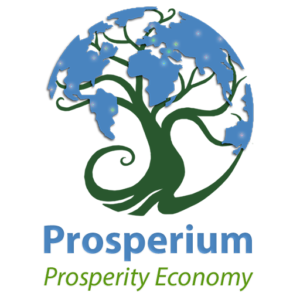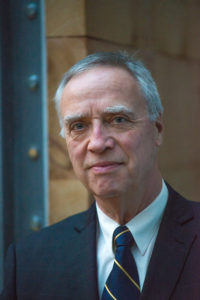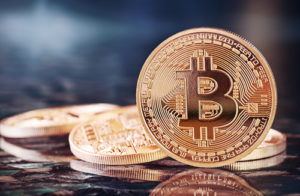
The following is Part 2 of a sponsored Q&A with the founders of the firm behind Canada’s new Prosperium cybercurrency. Doug Coyle, pictured on the left, is the Chief Executive Officer of Toronto-based Prosperium Inc. Tony Humble is President and Chief Organizational Officer. You can find the introductory blog in this series by clicking on Blockchain Revolution, Global Prosperity and Prosperium. Also, a new white paper has just been published.
The pre-Sale rollout plan for Prosperium tokens
Jon Chevreau: Let’s resume with a recap how you’re rolling out Prosperium units and how pricing steps up over time.
Doug Coyle: Our currency Prosperium does have a period at the beginning, which we call our Presale period, when accredited investors can buy the coin at a value that is rising over time. The current value that we’re offering our token at is $2 per token for the presale token. That will be stepped up to $2, $4, $6, $8, $10, $15, $20, then by increments of $10 until finally it gets to $100 per presale token.
That price is based upon the network value; as we accomplish various milestones and increase the value and utility of the Prosperium platform and token the market price increases steadily; but once you reach $100 it then converts at 100 to 1 so one Prosperium token becomes 100 Prosperium “dollars” at a 1 to 1 ratio. It becomes stable at that point. That means that 1 Prosperium dollar is equal to one Canadian dollar. From then on it’s stabilized by smart contracts so it becomes very easy for someone to look at their Smartphone, see their balance is 1000 Prosperium dollars and they know what they what can buy with one thousand Prosperium dollars since it’s equal to C$1,000.
Jon: And outside Canada?
Doug: Each country will have its own Prosperium token that matches the local fiat currency. So in England, one Prosperium pound will equal one UK pound; same with the peso or the US dollar etc. We are set to be a stable-value token in all countries that accept us: wherver the regulators accept our platform so people are able to trade in a currency and know the price of anything in Prosperium dollars or tokens.
This is very different than Bitcoin because right now Bitcoin is worth around $4,000. So on any given day how do know how much the price of a cup of coffee is in Bitcoin? You don’t, not without doing a bit of a calculation or having your phone do it for you. So it’s a big advantage having a stable-value currency for everyday use that you can trust won’t fluctuate and be volatile while they hold it and that they know the price of things in that currency.
Fiat currencies vs cybercurrencies

Jon: You used the term fiat currency just now. Can you comment on traditional “money” and so-called fiat currencies like the dollar, Euro etc.? There’s nothing magical about the value of a dollar except that it’s dictated by governments, right? At least since it’s no longer backed by gold.
Doug: You’re right: part of understanding how to design a currency for Prosperium is understanding the mechanism that all currencies play in an economy; an economy is just a community of people trading their work with each other: goods and services. The economy, the GNP or GDP, is just the sum of all those transactions in that community; so what is money? Money is just a trusted accounting system; and the important word there is trusted. If you’re in an economy or country that has its currency backed by gold or silver or some commodity, you’re using that commodity to create that trust factor; you’re trusting that gold will be relatively stable over time.
If you live in a country like Canada or the United States, or most of the world now, it’s not backed by a commodity like gold or silver but by the promise of the sovereign: of the government. You are relying on the fact that the government will say yes, we’re going to back that dollar and manage it and keep it at a relatively stable value. You can question how much you can trust any sovereign to handle money but that’s the theory. So you have those two systems of creating trust; backed by a commodity or backed by the promise of a sovereign.
Jon: Do you use the term fiat?
Doug: Yes, we use the term fiat. Fiat just means by demand or by order. I as the king demand, or order, that this piece of paper here is worth one Canadian dollar.
What is backing Prosperium?
Jon: At least when it was backed by gold, it was finite, like Bitcoin. But now it’s potentially infinite? Look at Zimbabwe and what happens with inflation when it’s backed by nothing? Or Venezuela.
 Doug: Yes, which raises a very interesting question. What is backing Prosperium? In our case, it’s a very concrete thing that backs it. New currency can be created; you have to remember that all currency is created. Continue Reading…
Doug: Yes, which raises a very interesting question. What is backing Prosperium? In our case, it’s a very concrete thing that backs it. New currency can be created; you have to remember that all currency is created. Continue Reading…









